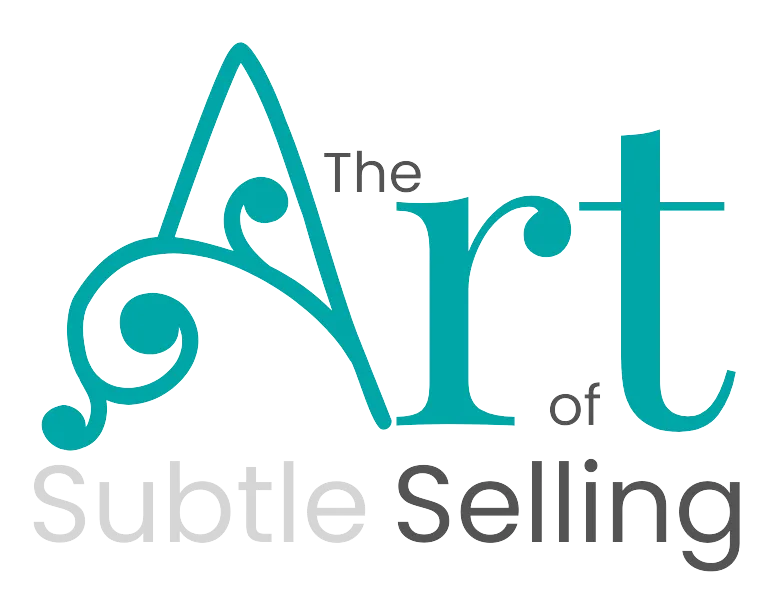
How Personality Influences Buying Decisions
If you’ve been in sales for more than five minutes, you’ve probably noticed that not all buyers make decisions the same way. Some people jump in with both feet, ready to commit. Others need all the details, a spreadsheet, and a week to “think about it.” Some won’t budge without social proof, while others don’t hesitate to buy - as long as it makes them look good.
So what’s going on? In a word: Personality.
The way someone buys is heavily influenced by how they think, process information, and make decisions; all of which tie back to personality. And if you don’t recognise how your prospect makes buying decisions, you might accidentally lose them even if they actually want what you offer.
Today, we’re diving into how personality impacts buying behavior so you can adjust your approach and meet your prospect where they are, not where you think they should be.
Before we dive in, I want you to know that most people are not solely one type! They are a blend of two, sometimes three. There are some key things to listen for, and questions to ask, to help you confirm which type is their primary decision driver so you can adjust your approach accordingly.
Okay, now let’s dive in.
The Analytic Buyer: Show Me the Data
Meet Alex the Analyst: the buyer who needs logic, structure, and proof before they commit. They’re skeptical of hype, resistant to pressure, and allergic to vague promises. If you say, “Trust me, this will change your business,” Alex will be mentally packing their bags before you even finish your sentence.
How They Buy:
- They research everything. They’ve probably read your testimonials, combed through your website, and watched that webinar you forgot existed.
- They need logic, structure, and proof that your offer works.
- They hesitate when emotions feel too high—they want rational validation.
- But even analytics have emotions—they just process them differently. They want to know the long-term impact and how this decision protects them from risk.
How to Sell to Them:
- Stick to the facts. Give them case studies, data, and real-world examples.
- Avoid vague language. Instead of “This will transform your business,” try “This has helped 93% of clients increase revenue within six months.”
- Connect logic to emotional reassurance. Instead of just saying, “This tool improves efficiency,” say, “…which means your team saves hours each week, reducing stress and giving you more time to focus on growth.”
- Show risk reduction. They don’t buy on excitement alone—they buy on certainty. Help them see how choosing your solution now prevents bigger headaches later.
When selling to Alex, balance facts with emotional logic. The numbers matter, but so does the peace of mind that comes with making the right choice.
The Driver Buyer: Make It Fast, Make It Big
Meet Dylan the Driver. Dylan is all about speed, efficiency, and results. They make decisions quickly, often based on gut instinct. They don’t want every detail; they want to know what’s in it for them and how fast they can get the outcome they want.
How They Buy:
- They make fast, decisive choices. If they like it, they’re in—but if you waste their time, they’re out.
- They’re goal-focused—if your solution gets them to the result faster, they’ll buy.
- They hesitate when they sense weakness—if you seem uncertain or lack confidence, you’ll lose them.
How to Sell to Them:
- Get to the point—fast. If they ask, “How does this work?” don’t hit them with a 10-minute breakdown.
- Focus on results. Say, “This will help you land five new clients in the next 30 days.”
- Match their pace. If they’re high-energy and direct, don’t slow them down with unnecessary details.
- Let them feel in control of the decision—Drivers don’t like being “sold.”
The Expressive Buyer: Status, Influence, and Recognition
Now meet Elliot the Expressive. Elliot cares about image, influence, and being part of something important. They don’t need permission from others to buy, but they do care about who else has done it and how it will position them in their social circle or industry.
How They Buy:
- They make emotional, socially-driven decisions. If a respected peer endorses something, they’re in.
- They need to feel seen and valued in the conversation.
- They hesitate when they don’t see how this positions them as successful or ahead of the curve.
How to Sell to Them:
- Highlight who else has done this and the recognition they’ll get from saying yes.
- Use aspirational language. Say, “Top industry leaders are using this strategy to position themselves ahead of the competition.”
- Make it fun, engaging, and high-energy—Expressives respond to enthusiasm.
- Show them how this makes them look good—whether it’s increased credibility, status, or influence.
The Amiable Buyer: Safety, Trust, and Connection First
Finally, meet Ava the Amiable. Ava values relationships, emotional security, and reassurance. They are risk-averse, which means they seek validation from trusted sources before making a decision.
How They Buy:
- They need safety and trust before committing.
- They seek external validation—they want to check with a spouse, a team, or a mentor before deciding.
- They hesitate when they feel pressure or uncertainty. If they sense “salesy” energy, they’ll back off.
How to Sell to Them:
- Build rapport and trust first. Rushing into the offer makes them uncomfortable. This type responds very well to the Empathy Opening because of how it helps them feel seen, heard and valued.
- Reinforce that they’re making a safe, supported choice. Say, “A lot of people in your situation felt the same way at first, and here’s what helped them feel confident moving forward.” (feel, felt, found technique)
- Equip them with what they need to check with others. Instead of “Let me know after you talk to your partner,” say, “Would it help if I sent you a summary to make that conversation easier?”
Why This Matters in Sales
If you only sell the way YOU buy, you’ll lose people who don’t process decisions like you do. It’s vital you flex your style to meet them where they are.
Have you ever wondered why some prospects ghost you, even when they seemed interested? It might not be because they didn’t want your offer. It might be because your selling style didn’t match their buying style.
When you learn to read personality cues, adjust your approach, and meet people where they are, everything shifts. Your sales calls feel easier, more natural, and less frustrating.
And that’s the real secret in sales—it’s not about forcing a yes. It’s about leading them to the decision that already makes sense for them.
Download the Full Buyer Personality Guide
Want to dive deeper into personality-based selling approaches? Download my free resource “Buyer Personality mini-Guide” here and learn how to adapt your approach to every type of prospect! Prefer to watch a video? You can check out my mini-training on this topic here.
Audio Trainings & Insights
Listen to My Audio Trainings
Click play to gain insights on The Subtle Art of Selling.
Preventing Objections & Empathy Opening
Solopreneur Summit
Screeing Vs Qualifying in Sales
The Flamingo Podcast
Getting Comfortable with the Unknown
Chaos to Clarity Podcast 2024
Want more? Check out my full training library on YouTube! @artofsubtleselling

